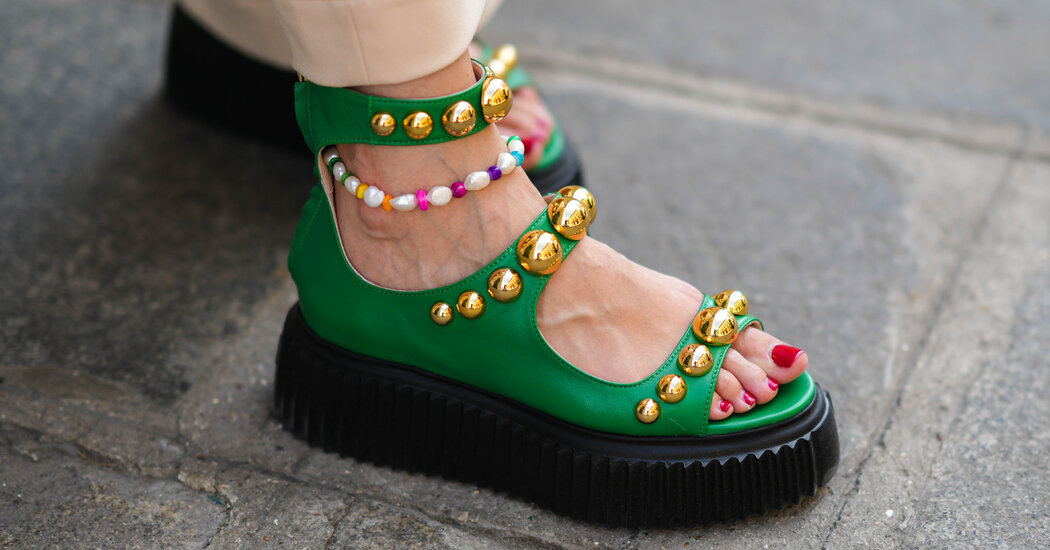
As we look toward the summer, I’ve started to think about new shoes, like a nice pair of sandals or some of the cute block heels I’ve seen on the subway. My office is business casual. But I can’t get past the idea of displaying my toes in the office — it just feels wrong. How much toe cleavage is too much? Can you get the dogs out around the water cooler? — Sarah, New York
In the spring, a person’s fancy turns to thoughts of … open-toe shoes! Sandals, Birkenstocks, mules — any footwear that allows your feet, trapped for months under layers of socks and boots, to breath a little. To feel the breeze on your bare heels and toes is to know that warmer times have arrived. Yet feet also trail a host of associations, stereotypes and prejudices.
Indeed, when it comes to the scale of fraught body parts, feet rank pretty high. They have been revered and hated throughout history — a symbol of both our rootedness and our desire to escape it, of humility, hard work and eroticism.
Pablo Neruda wrote odes to feet. Dr. Seuss wrote a whole book about them (sample snippet: “In the house and on the street how many, many feet you meet!”). In certain eras they were the rare visible bit of skin, which has imbued them with all sorts of powers, sexual and otherwise. Hence the term “toe cleavage.”
There’s a reason the royal family still hews to the rule of no open-toe shoes on major public occasions. There’s even an official name for a condition in which someone has an extreme aversion to feet: podophobia.
As a result, the matter of just how much to bare is, as with other body parts, not without its intricacies. Especially in the workplace.
An ad hoc survey of colleagues produced results clustering on two extremes: those who were utterly sanguine about the idea of visible toes and heels at work and those who were horrified at the mere suggestion.






